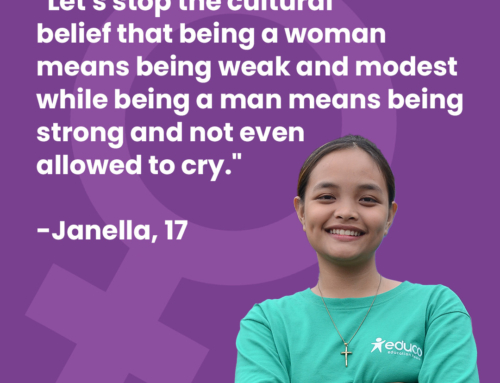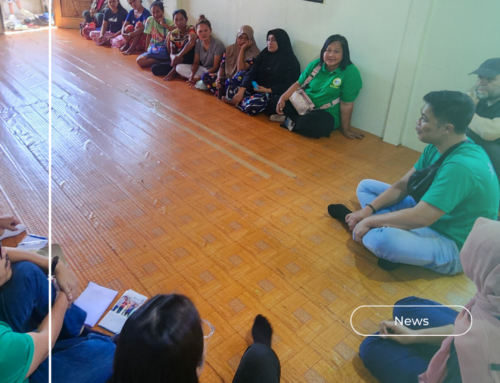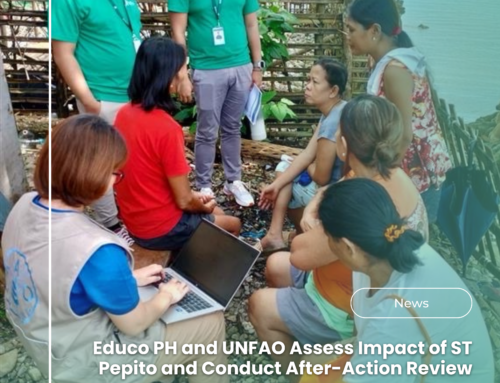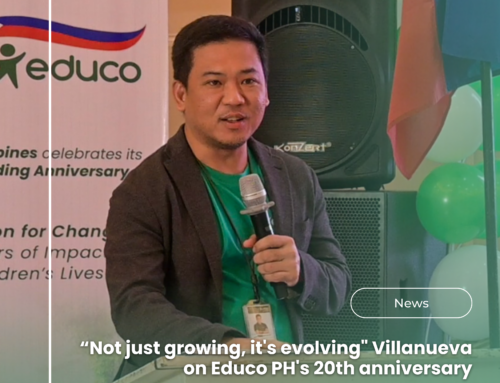by Venjie Cabria (Project Officer)
As the world tentatively steps into the post-COVID era, one of the stark realities that has come to light is the surge in child labor cases. The pandemic, with its economic disruptions and social upheavals, has created fertile ground for this concerning trend to take root and flourish. Christine, a fifteen-year-old girl from Caramoran, Catanduanes, is one living example of a victim-survivor of this harsh reality.
Grace is currently navigating her junior high years. A tenth-grade student, she is known among her teachers for her quiet demeanor yet remarkable academic performance, consistently earning honors. Her English teacher praises her as a focused individual with a clear aspiration of becoming a distinguished doctor in the future. Despite her promising potential and bright prospects, Grace, even at her tender age, has experienced firsthand the harsh realities of being labeled as one of the numerous child labor victims in Catanduanes.
Grace’s story unfolded in 2022, during the peak of the post-COVID effects. According to her account, it all began during the lockdown when classes, work, and daily activities came to a halt. Living with her family at that time was incredibly challenging, she recalled. Her mother, Anita, a 50-year-old vendor of pillowcases and bed sheets, bore the sole financial burden for the family due to her husband’s health issues that limited his ability to work. Jose, Grace`s father, had suffered a mild stroke years before the pandemic. Despite Grace’s older brothers being of legal age, they also had their own families to support. Her eldest brother owned a bakery and had a daughter of his own, which ultimately was the main reason why Grace identified as a child laborer later on. Her second and third brothers were also working hard to support their families. As the youngest daughter and fourth child, Grace felt compelled to take on responsibilities beyond her years to assist her mother and alleviate their challenging circumstances.
Grace recounted how, amidst the daily hardships, she approached her brother with a proposal to work at his bakery and care for her niece. Both her brother and sister-in-law, occupied with managing the bakery daily, agreed to pay Grace 50 pesos per day for her dual roles: assisting in bread preparation and babysitting. Initially, the tasks seemed manageable, but over time, Grace found them increasingly demanding. She vividly remembered the strenuous moments spent kneading bread dough, tearfully describing the physical toll it took. Beyond kneading, she was responsible for washing the equipment used and maintaining the bakery’s cleanliness. Additionally, she would cover as a vendor when needed. Her days started at 5:00 am, baking until 7:00 am, then caring for her niece until 3:00 pm, returning to the bakery for cleanup until 8:00 pm. Only then, could she focus on her asynchronous learning modules.
When asked about her social life during those busy times, Grace responded affirmatively, noting that it varied depending on the circumstances. She explained that her only breather from daily responsibilities was when she retrieved and submitted her school modules, typically once a week. This brief window allowed her to connect with friends, discussing daily routines, hobbies, favorite books like Wattpads, K-dramas, or favorite boy band groups—moments she cherished as a temporary escape from reality. Despite these fleeting moments of joy, Grace remained focused on her family. She allocated her weekly earnings wisely, ensuring their daily needs were met and as well putting with equal importance the investment in her education. Managing her school responsibilities alongside her friend, they collaborated each night to complete their modules, culminating in both of them achieving honors—a testament to their dedication and teamwork.
As Project SAGIP came into play, Grace’s struggles as a child laborer finally came to an end. She gained a clear understanding of her situation, realizing that the labor she had thought was normal for her age was actually not. Grace expressed profound gratitude for being identified as a child laborer because it brought awareness of her rights and important aspects she had previously overlooked. She emphasized feeling rescued by the project, as her family promptly decided to remove her from the exhausting environment once she was identified. This change brought her immense happiness. Additionally, Project SAGIP not only clarified the distinction between child labor and child work for Grace but also educated her about her rights and the importance of child participation.
Despite of Grace`s quiet and reserved nature, Project SAGIP also provided opportunities for her and other children to develop leadership skills and engage in decision-making processes. The Barangay Children`s Organization who was organized and formed by the project, was able to conduct activity implementation which offers several arenas where the children of Brgy. Mabini can openly participate. Furthermore, Grace’s family benefited from financial assistance, enabling them to invest in a business venture. Her mother, Anita, utilized this assistance to establish a successful business and became a trusted member of the Parents Savings Group, comprising parents of identified child laborers in their Barangay. Remarkably, this Savings Group became a pioneering initiative, extending beyond Educo`s sponsorship area and setting up an efficiently managed group sundry store. Currently, the group continues to thrive in their business endeavors, showcasing effective management and growth.
Now, Grace is focused on her studies, determined to achieve her dream of becoming a doctor. She has also taken an interest in stitching and knitting dresses, believing that these skills will prove useful in the future. Grace expresses deep gratitude to Project SAGIP for providing her with the awareness of her rights, responsibilities, and the importance of her well-being. She is eager to share these messages with other children who have yet to realize their full potential, encouraging them to be patient, respectful, and honest. Grace believes that with perseverance and patience, everyone can achieve their goals in due time.
“Pirmi lang kamong maging mapasensya, maging ma respeto ngani irespeto din pabalik, asin dae paglingwan maging honest pirmi… kina maabot man ang oras na satuyang tig hahalat tyaga lang kaya ninto yan!”, she said.
In the wake of the COVID-19 pandemic, the world grappled with unprecedented challenges, leaving no facet of society untouched. Among the most vulnerable were children. Grace`s journey is not just a tale of struggle but a testament to resilience in the face of adversity. As global landscapes shifted and economies faltered, the insidious rise of child labor became a stark reality. Grace’s story embodies this harsh truth, yet it also shines a light on the power of determination and community support in reclaiming lost childhoods.
Grace’s journey reminds us that even in the darkest of times, there is hope and strength within each child waiting to be nurtured and empowered.






